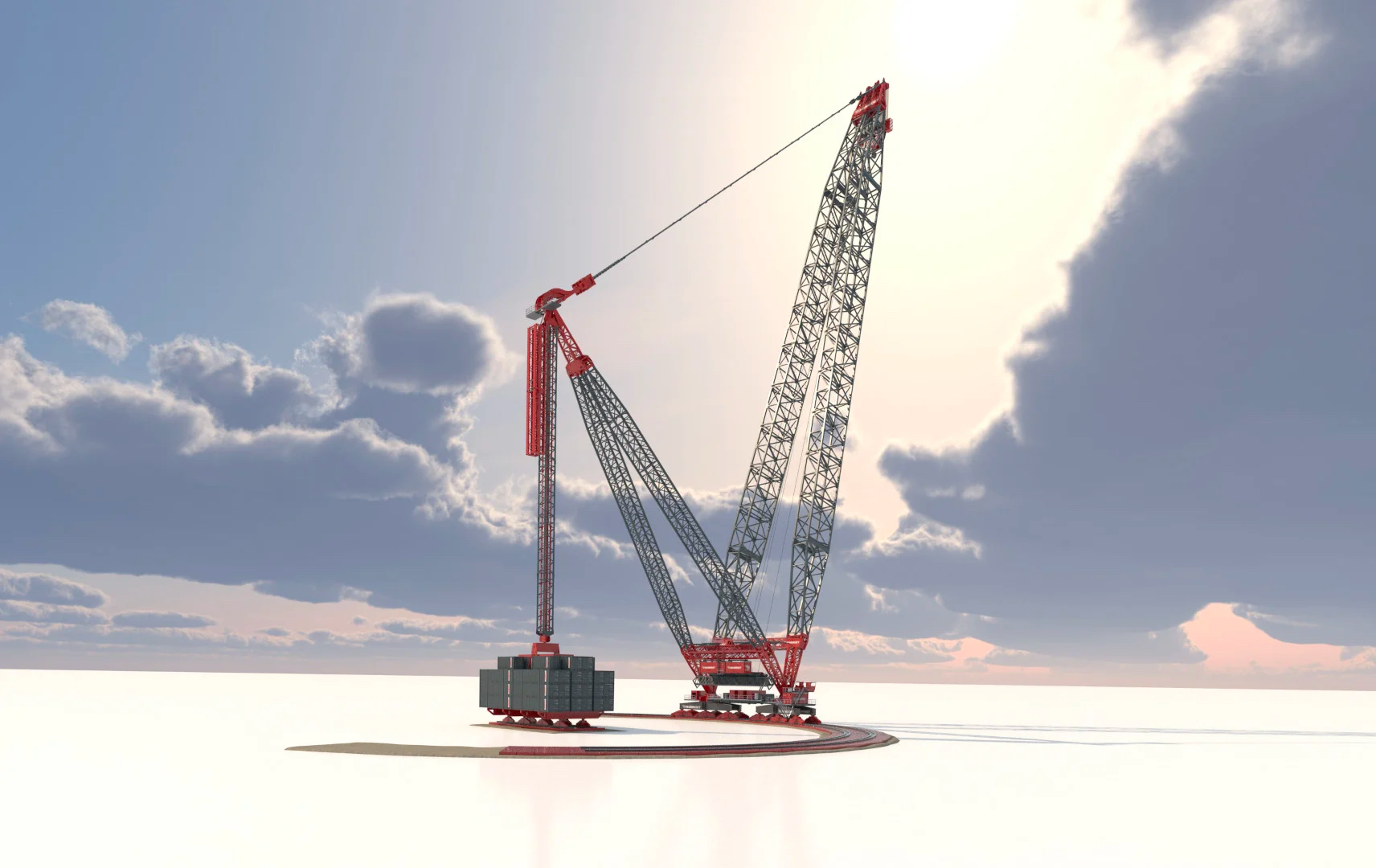Mammoet has designed a new heavy-lift crane with a capacity of 6000 tonnes. The crane is specifically designed for the construction of FPSOs and floating LNG factories and allows modules to be built bigger than ever before.
Constructing FPSO and FLNG modules onshore has allowed EPCs and owners to expedite project schedules and increase cost-effectiveness. By constructing the hull and topsides simultaneously and at greater scale, the time to first production has been reduced.
‘As these components grow, their efficiency rises – but so does the challenge of their integration. The sheer size of these modules lies on the edge of what modern lifting technology can achieve – both from the land and the water – regularly breaking the 3000 tonnes barrier and measuring tens of thousands of cubic metres,’ Mammoet states.
The limitations on lifting capacity force engineers to fabricate smaller modules than would be optimal. The SK6000 allows EPCs and owners to build bigger than ever before. It also allows the topside modules to be lifted and installed from one single position without any need to rotate the hull, which is a costly and time-consuming exercise.
The crane has been designed in such a way that there is no need to install a full ring track. This frees up site space by up to 45 per cent. Like other large Mammoet cranes, the SK6000 can be containerised to allow for quick transport and assembly on site.
‘As FPSO designs scale-up, not only are module designs growing larger and heavier, but flare towers are also becoming taller than ever before. With our SK6000, we can install flare towers of up to 1500 tonnes and 150 metres in height in a single piece,’ comments Mammoet’s sales director Giovanni Alders.
The SK6000 utilises the same design as the SK190 and SK350 before it, occupying a similar overall footprint to its predecessors.








